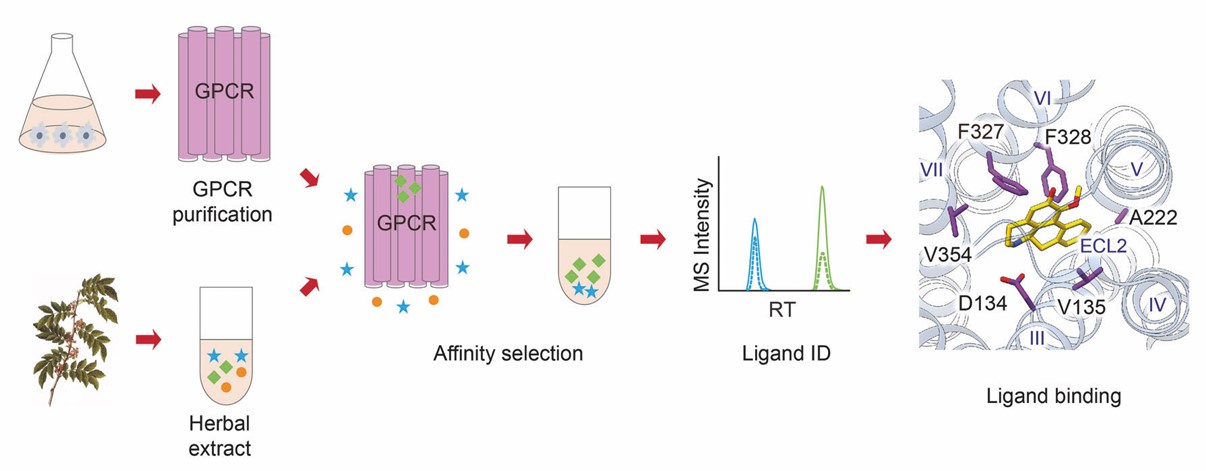Exosome Display-based Protein Array Screen
Overview Services Features FAQs
Exosomes, when combined with protein array screening, provide a promising method of high throughput drug screening platform against drug targets, especially for hard-to-prepare transmembrane proteins such as the G-protein-coupled receptors (GPCRs). For GPCR-targeted drug screening of cognate ligands or small compounds, Creative Biolabs is employing exosome display technology as a receptor presentation platform.
Introduction
GPCRs represent the single most important class of drug targets. The implementation of microarray methods is particularly relevant for the development of high-specificity ligands during the process of drug discovery. Traditionally, membrane preparations or purified membrane proteins need to be isolated and purified from their native environment, followed by immobilization onto the membrane-binding surfaces using approaches such as covalent or affinity-directed immobilization, or noncovalent immobilization. However, arraying these proteins is a difficult process because of issues associated with maintaining the correctly folded conformations of proteins on solid substrates. Recently, exosome display technology has been utilized for GPCR arraying for drug screening.
Exosomes, which are natural carriers of both soluble and membrane-bound proteins, are exploited to present membrane proteins, especially GPCRs on the surface of exosomes, for drug screening. Combining protein array screening techniques with exosome display technology allows for the simultaneous analysis of ligand/compound binding to various receptors. The use of exosome display for GPCR drug screening has shown advantages such as:
-
GPCRs displayed on the exosomal surface are functionally similar to the receptors found on the cell surface.
-
Exosomes represent an ideal source of drug targets because receptors are presented in their native conformation. The purification process of exosomes is devoid of any denaturing steps to keep the native conformation.
-
Significant amounts of recombinant GPCRs on exosomes can be obtained.
-
They provide advantages as a source of GPCRs over membrane preparations or purified receptors.
 Fig. 1 Experimental workflow of affinity MS-based screening of natural herb extracts.1
Fig. 1 Experimental workflow of affinity MS-based screening of natural herb extracts.1
Exosome Display-based Protein Array Screen Service
Our service leverages exosome display technology to create protein arrays that facilitate high-throughput screening of protein-protein interactions. Exosomes are engineered to present a diverse library of proteins on their surface, allowing for the identification of novel binding partners with high specificity and affinity. The workflow including:
-
Library Construction: Generation of exosomes displaying diverse protein libraries.
-
Screening: High-throughput screening of protein interactions using the exosome arrays.
-
Data Analysis: Comprehensive analysis of screening results to identify significant interactions.
Features
-
The latest technical platform — exosome display is an innovative technique that is applied to protein array screens.
-
An expert staff with extensive experience — they can help you design the optimal protocol for protein array screen.
-
A comprehensive array of technical advice – our professionals offer instantaneous technical tracking.
-
High quality, consistent reproducibility, and timeliness of data analyses — we provide accurate and rapid analysis data.
Outstanding professionals at Creative Biolabs have been working on protein array screens based on exosome display for a long time, and they have a lot of experience. We have great confidence in providing exosome-based protein array screen services of the highest caliber. Contact us and initiate a discussion if any of our services interest to you.
FAQs
Q: What are the advantages of using exosome display-based protein arrays?
A: Exosome arrays enable the screening of thousands of interactions simultaneously, providing insights into protein function and interaction networks.
Q: What types of biological samples can be used with exosome display technology?
A: Exosome display is versatile and compatible with various sample types, including cell lysates and purified proteins.
Q: What possible uses does the protein array screen based on exosome display have?
A: Applications include discovering novel protein interactions, identifying biomarkers, and uncovering potential drug targets.
Reference
-
Yang, Dehua, et al. "G protein-coupled receptors: structure-and function-based drug discovery." Signal transduction and targeted therapy 6.1 (2021): 7. Under Open Access license CC BY 4.0. The image was modified by extracting and using only Part d of the original image, and by revising the title.
For Research Use Only. Cannot be used by patients.
Related Services:

 Fig. 1 Experimental workflow of affinity MS-based screening of natural herb extracts.1
Fig. 1 Experimental workflow of affinity MS-based screening of natural herb extracts.1









